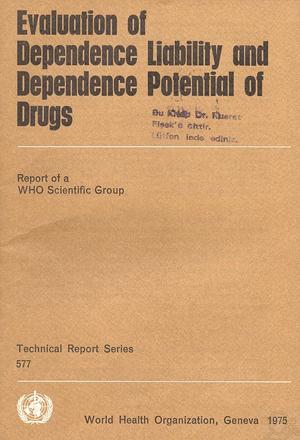Evaluation of Dependence Liability and Dependence Potential of Drugs
İÇİNDEKİLERCONTENTS Pa 1. Introduction............................. 2. Review of previous work of the World Health Organization concerning methodology of evaluation of dependence liability and dependence potential of drugs ................................ 3. General considerations........................ 4. General methodological principles................... 5. Preclinical methods.......................... 5.1 Assessment of a drug's reinforcing properties............ 5.2 Physical dependence....................... 6. Clinical methods........................... 6.1 Methods of assessing subjective effects of drugs........... 6.2 Methods of assessing tolerance and physical dependence of drugs . . . 7. Epidemiological methods concerning use of and dependence on drugs 7.1 Prospective, retrospective, and other studies............ 7.2 Monitoring and surveillance................... 7.3 Comprehensive monitoring of adverse effects of drugs as an epidemio- logical tool 8. Research and methodological issues concerning evaluation of dependence liability and dependence potential of various categories of psychoactive drugs 8.1 Morphine and morphine-like analgesics.............. 8.2 Drugs with morphine agonist and antagonist properties....... 8.3 Sedatives and hypnotics..................... 8.4 Volatile substances........................ 8.5 Psychomotor stimulants and related drugs............. 8.6 Hallucinogens......................... 8.7 Cannabis and delta-9-tran,tetrahydrocannabinol (THC)....... 9. Correlation of results of preclinical and clinical assessments with patterns of chronic drug-taking in man...................... 10. Some important areas of research........... 11. International collaboration and exchange of information 12. Conclusions and recommendations..........    |



